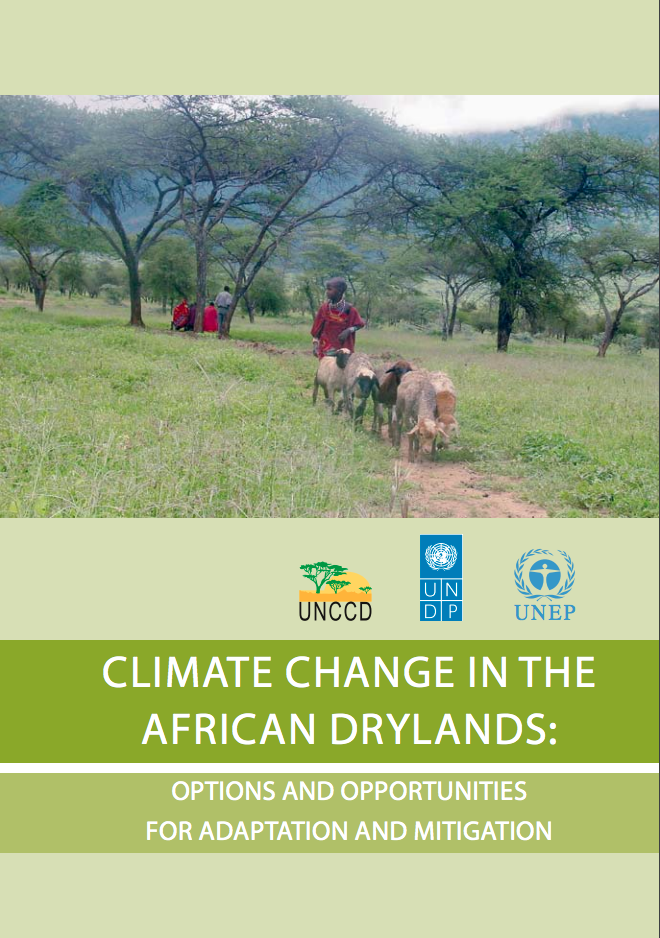Resource information
The drylands of Africa, exclusive of hyper-arid zones, occupy about 43 per cent of the continent, and are home to a rapidly growing population that currently stands at about 325 million people. Dry zones, inclusive of hyper-arid lands, cover over 70 per cent of the continent’s terrestrial surface. Outside of the cities many dryland inhabitants are either pastoralists, sedentary or nomadic, or agro-pastoralists, combining livestock-rearing and crop production where conditions allow. Over millennia they have lived with variable rainfall and frequent droughts using a range of coping strategies, but changing circumstances mean that these traditional methods must be capitalized upon and enhanced. Unsustainable practices are contributing to significant land degradation, and it is predicted that climate change will further compound the already tenuous situation. Without significant efforts to address the impact of climate change and land degradation, the livelihoods of the African drylands populations will be in jeopardy.
There are many adaptation options, which, if adequately designed and applied in response to specific local contexts and realities, can limit the negative effects of climate change and land degradation on drylands livelihoods in Africa. Some are based on natural resource management (NRM), which combines land conservation and productivity enhancement practices, such as improved herd management, rainwater harvesting, and home gardens. Others are market-based, which aim to improve market access and increase incomes, thereby reducing vulnerability. Institutional options form a third category, focused on local-level structural change such as extension and education, micro-credit and migration. Many of these adaptation measures are already familiar to the inhabitants of the drylands, but their effectiveness now depends on careful selection and application, so that they are implemented in the right place and at the right time. An enabling policy environment is also critical for the adaptation options to be practised in a sustainable manner.
Land degradation is also a source of greenhouse gases. Addressing land degradation in dryland ecosystems therefore also offers climate change mitigation benefits. Drylands in Africa have a significant mitigation potential: changes in land management practices can lead to greater carbon sequestration, that is, removing carbon from the atmosphere. The carbon sequestration potential of the drylands is high, due to their large area and their current low carbon content. With the right incentives and support to manage drylands for carbon sequestration, their inhabitants could make a great contribution to the mitigation of contre global climate change crisis.
The key to realizing this potential is to recogize the continuing need for poverty alleviation support in the dry parts of Africa, and also to recognize the importance of carbon sequestration in drylands soils and link drylands management to carbon markets, so that custodians of dryland ecosystems have incentives to manage them for long-term carbon sequestration compensation. However, current carbon markets recognize very few potential kinds of carbon finance projects in most parts of drylands. There are also methodological constraints that need to be addressed. Under these circumstances, carbon prices will remain low.
Carbon markets are likely to develop more rapidly with greater financial backing than other markets for ecosystem services. Dryland landscapes should be integrated more effectively into global mitigation strategies. The realization of such interventions in African drylands, supported by adequate development assistance and carbon-financing, promises multiple co-benefits that contribute to the global mitigation of climate change, while safeguarding dryland communities’ livelihoods through improved ecosystem services for food security, biodiversity and water provisioning and regulation as well as enhanced ecosystem function and resilience.




